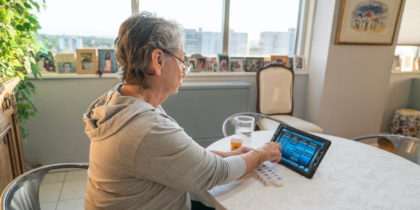As an industry, healthcare understands the benefits of telemedicine and telehealth tools, but the government has been slow to catch up, leaving government treatment of this emerging care delivery method lagging.
This is why 22 health systems, along with other healthcare organizations and individuals, recently sent a letter to the Director of the Congressional Budget Office (CBO), Keith Hall, in an effort to convey the importance of using commercial data to evaluate the effectiveness of telehealth. The lack of reimbursement for telehealth has left decision makers in government with few reasons to support telehealth initiatives, despite much success in the commercial sector. As the letter explains, “The lack of Medicare data is understandable given the outdated statutory restrictions on telemedicine: since federal law prevents many providers from being paid when they use telemedicine to serve Medicare beneficiaries, obviously, little data is available.”
A Slow Process for Medicare
Individual states have taken initiatives to get telehealth moving. According to Modern Healthcare, in 2014, the Federation of State Medical Boards expanded support for some technologies used in telehealth encounters. As things stand today, a full 29 states as well as the District of Columbia have enacted private telehealth coverage laws. That number is expected to increase, reaching 32 states by 2017.
Medicare, on the other hand, has only inched along, proposing a minor expansion of payment rules that would include telehealth as well as behavioral health visits. Actual payments around telehealth, though, have been minuscule, with Medicare paying out only $17.6 million in telehealth reimbursements last year out of the total $546 billion in Medicare expenditures, which is just over .003 percent.
A lack of reimbursement means reluctant providers, and reluctant providers mean a lack of real-world data around the cost-effectiveness and clinical results of telehealth. The commercial sector, however, has ample experience in telehealth and the corresponding research to support the expanding market — something the letter authors have personal experience in. As the letter states, “There is, however, substantial experience utilizing telemedicine outside Medicare. Combined, we have authored many studies showing its quality and cost-effectiveness in fee-for-service as well as managed care environments.”
The letter was signed by key healthcare players including:
- Ascension Health
- Scripps Translational Science Institute
- Stanford Health Care
- University of Mississippi Medical Center (UMMC) Center for Telehealth
- Joseph Kvedar, MD, Partners Health Care
- Elizabeth Madigan, PhD, RN, FAAN, Case Western Reserve University
- Neelkamal Soares, MD, Geisinger Health System
While telehealth still stands as an emerging delivery method today, generalized increases in the costs of care delivery and growing popularity in the commercial sector will likely force government bodies to take a more serious and expedient look at their use.
For more information on the benefits of telehealth, read this case study on how a leading health insurer is leveraging innovative technology to enhance home visits and reduce hospitalizations.







